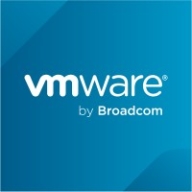

IBM Turbonomic and VMware Tanzu CloudHealth are leading products competing in the cloud resource management category. Based on the features provided, IBM Turbonomic seems to have the upper hand in automation and resource management efficiency, whereas VMware Tanzu CloudHealth excels in multi-cloud management and integration.
Features: IBM Turbonomic automates workload optimization with Smart Analytics, Automation, and VM Rightsizing Recommendations, which offer significant resource management and cost-saving benefits. VMWare Tanzu CloudHealth provides excellent multi-cloud management and offers functionalities like cloud cost management, strong integration with VMWare products, and resource utilization insights.
Room for Improvement: IBM Turbonomic users seek enhancements in dashboard navigation, report customization, and third-party tool integration. VMWare Tanzu CloudHealth could improve server-level visibility and expand beyond cost management to include detailed performance monitoring, as well as better integration with enterprise tools.
Ease of Deployment and Customer Service: IBM Turbonomic is favored for on-premises and hybrid cloud deployments, offering responsive and knowledgeable technical support. VMWare Tanzu CloudHealth is preferred for public cloud environments and also receives positive reviews for customer service, though some users desire faster response times. Both solutions ensure strong user support post-deployment.
Pricing and ROI: IBM Turbonomic offers a flexible and competitively priced licensing model, providing ROI within a year due to reduced hardware needs and increased efficiencies. In contrast, VMWare Tanzu CloudHealth adopts a subscription-based model, initially perceived as costly, but ultimately delivers significant cost savings in multi-cloud management, offering meaningful ROI through effective resource utilization.
| Product | Market Share (%) |
|---|---|
| IBM Turbonomic | 4.5% |
| VMWare Tanzu CloudHealth | 1.7% |
| Other | 93.8% |


| Company Size | Count |
|---|---|
| Small Business | 41 |
| Midsize Enterprise | 57 |
| Large Enterprise | 147 |
| Company Size | Count |
|---|---|
| Small Business | 4 |
| Midsize Enterprise | 2 |
| Large Enterprise | 4 |
IBM Turbonomic offers automation, planning, and right-sizing recommendations to streamline resource management, improve efficiencies, and optimize costs across virtualized environments and cloud platforms.
IBM Turbonomic is valued for its capability to optimize resource allocation and monitor virtual environments efficiently. It facilitates automated decision-making in VM sizing, load balancing, and cost optimization for both on-premises and cloud deployments. Users can leverage insights for workload placement, ensure peak performance assurance, and effectively right-size across VMware and Azure. The ongoing transition to HTML5 aims to improve visual and navigational ease, while expanded reporting features are anticipated. Opportunities for improved training, documentation, and integrations enhance platform usability and functionality.
What Are the Key Features?In finance, IBM Turbonomic aids in maintaining platform efficiency during market fluctuations. Healthcare organizations leverage its capability for resource optimization during high-demand periods to enhance patient care support. Retailers use it for planning in peak seasons, ensuring resources align with fluctuating demand to maintain performance continuity.
VMware Tanzu CloudHealth, formerly known as VMware Aria Cost Powered by CloudHealth, is a specialized cloud management platform tailored for Multi-Cloud Cost Optimization. It offers comprehensive visibility into cloud spending across various providers, enabling users to identify areas for optimization and make informed resource allocation decisions. With features like reserved instance management, resource rightsizing, and automated cost governance policies, it facilitates financial management for optimal cost efficiency. Beyond cost optimization, Tanzu CloudHealth enhances cloud operations through workload optimization and governance automation, catering to multi-cloud environments encompassing public, private, and hybrid clouds. Its primary focus remains on enabling organizations to effectively manage and reduce cloud expenditures while supporting operations across diverse cloud platforms.
We monitor all Cloud Management reviews to prevent fraudulent reviews and keep review quality high. We do not post reviews by company employees or direct competitors. We validate each review for authenticity via cross-reference with LinkedIn, and personal follow-up with the reviewer when necessary.